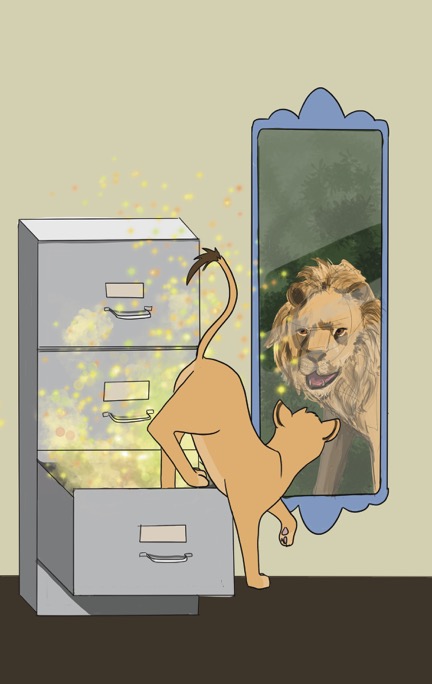I was a latchkey kid during late elementary school and middle school, giving me what felt like free reign over the two hours between school ending and my parents coming home. With the whole house at my disposal, I’d allocate my time to the shared family computer where I’d roam the landscape of Jamaa as a wide-eyed bunny rabbit named hermione999, sporting a rare cupcake hat and pink spots.
Animal Jam, National Geographic’s iteration of a virtual world targeted towards young kids, was all the rage at my elementary school, where we eagerly awaited the free computer time in the technology lab to log on, swap items and visit each other’s dens. The mid 2010s were chock-full of these kid-friendly attempts to foster online interaction (and supposedly educate), with Club Penguin, Webkinz, Poptropica and Toontown being some of the biggest names in the industry.
Games like these are typically called virtual worlds, with their hallmarks being their lack of traditional objectives and wins/losses, their emphasis on interaction with other users and the focus players place on building their own virtual lives. Although these games and websites feel dated looking back, people’s nostalgia for the virtual worlds of the past that they inhabited is undying. For instance, news of Club Penguin’s 2017 demise triggered mass log-ons from older ex-fans who felt their passion for the game reignited after they realized it was about to be lost forever. During quarantine, virtual world games saw another revival after restrictions on face-to-face interaction transformed interactive games into a critical site of interpersonal communication.
However, these short-lived victories for virtual worlds of the past took a blow when Adobe Flash announced that updates to the program would no longer be installed, making it impossible for fans to access thousands of popular online games without an emulator. These dated virtual worlds pale in comparison to new, immersive virtual environments fostered by innovations in graphics consoles and graphics. However, these whimsical worlds of bygone internet culture still hold value — creating a viable framework for how to move towards fulfilling and explorative uses of new technologies.
Beyond their nostalgia-inducing tendencies, virtual world games provide a crucial opportunity for users to explore identity, an opportunity that isn’t always safely available in the real world. In his book Avatar Culture, Stephen Webb explains that virtual worlds are an apt space for exploration because they maintain a general overarching structure that in some way acts as a parallel to our world. In-game currencies, shopping, destinations and norms all provide a semblance of similarity to our lived realities. However, these games grant users freedom in self-presentation that doesn’t exist in the real world due to constraints from a lack of support, material resources or the threat of social rejection. Because these virtual worlds allow you to change the way you present in seconds, they act as a critical site of play where the stakes surrounding identity are lowered. This means that these video games act as a liminal space that simulates reality while also alleviating some of the material conditions that make identity rigid.
It is this middle ground that makes virtual worlds an apt space for exploring different identity configurations, sometimes leading to increased discussion and theorization around one’s own real-world identity. Take, for instance, the numerous testimonies of transgender players, who described their ability to play as a character outside their gender assigned at birth as a critical moment in their exploration of their queerness. When describing how video games influenced her personal journey towards transition, game designer Anna Anthropy writes that “so much of gender performance is play: trying on roles and seeing how they fit.” This means that digital spaces provide respite from a real world that is often hostile towards queer identities, while also offering a degree of levity and flexibility towards gender that is difficult to attain out of game. Even if presenting differently in a virtual world doesn’t lead to a revelation about your own identity, it still offers a framework for understanding how gender is socially constructed while giving an opportunity for users to bend and shape those social norms.
The game Second Life also demonstrates a crucial instance of how players shape the games that they play. In 2003, Second Life charged people in-game currency for excessive building (discouraging custom creations in the game). In response, Second Life players staged a protest modeled off of the American Revolution, complete with in-game tea boxes, fireworks, and muskets that resulted in the developers altering their in-game currency structure. Although this example may feel ridiculous, the event at its core demonstrates how virtual worlds value user creativity and provide opportunities for new forums for engagement with corporations.
Despite their liberating potential, virtual world games are still not a perfect utopia. Often bound by profit, games require members to pay for full participation (and require base access to a computer and internet that one in five households in the United States still lack). Even in the digital realm, class still acts as a limiting factor, especially when games targeted towards children utilize membership tiers to gain profit. Furthermore, the dangers of online interaction for children, who are more vulnerable than most users, leaves them open to the threat of scams, harassment and inappropriate conduct.
Unfortunately, the solution for many concerned parents is to write off these games as something good in moderation that lacks any substantive benefit, like candy or junk food. Because of the opportunities to explore identity, create and socialize in new ways, it’s time to reconfigure the discussion surrounding the virtual world styles of games. Yes, it’s still critical to promote self-discipline and internet safety to younger users, but it’s also critical to re-frame how we talk about these games to comprehend the experiential modes of learning they produce. Especially once we grow older and have better digital literacy, this means we’re able to abandon the perspective of these games as child’s play to reincorporate them into our lives as a form of enrichment. It’s time to move beyond nostalgia and log back on to celebrate the potential of virtual worlds.




